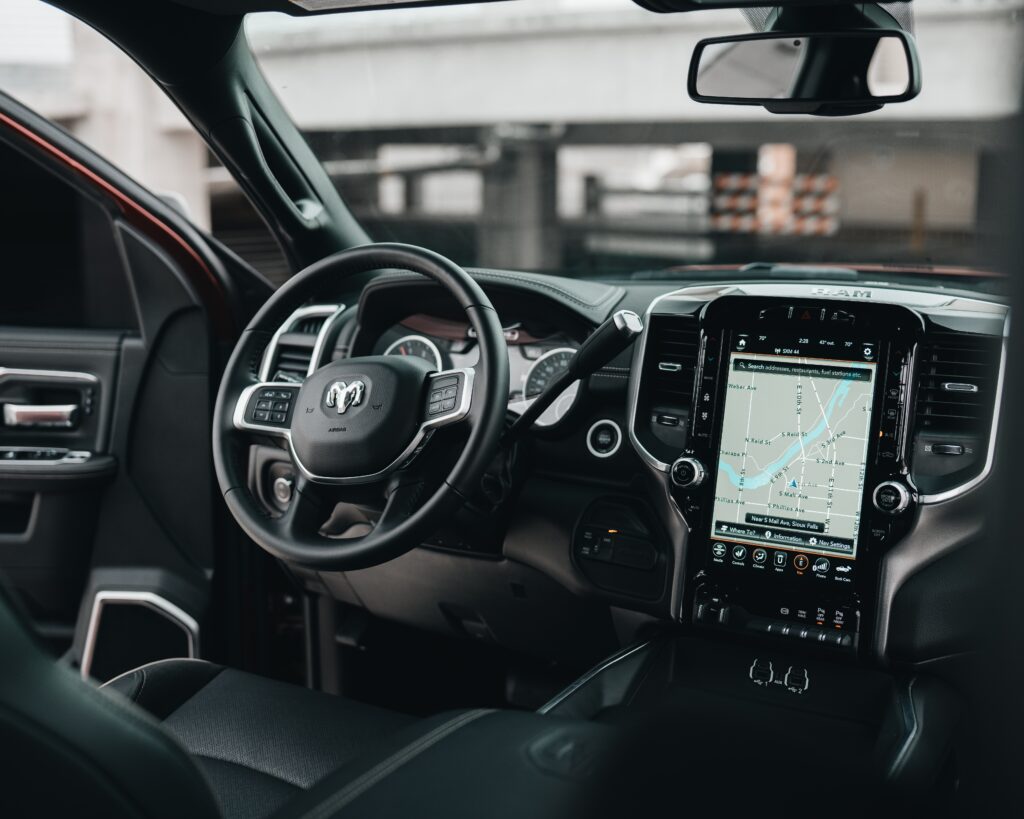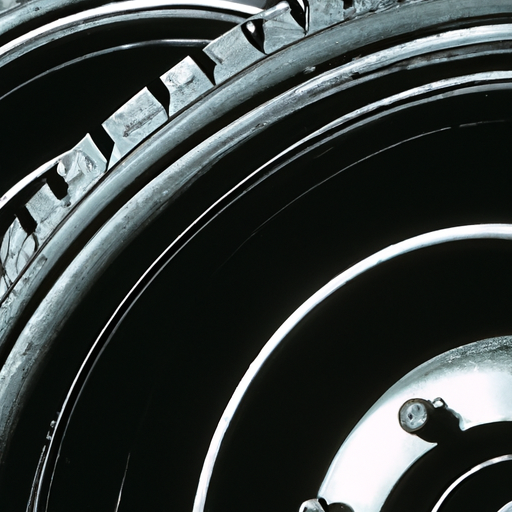If you’ve ever wondered how to measure the bolt patterns on your car wheels, look no further. Understanding the bolt pattern is essential when it comes to buying new wheels or upgrading your current ones. In this article, we’ll walk you through the simple steps of measuring your bolt patterns, so you can confidently find the perfect fit for your vehicle. Let’s get started!
Understanding Bolt Patterns
What is a bolt pattern?
A bolt pattern refers to the arrangement of bolt holes on a wheel. It is represented by two numbers: the number of bolt holes and the diameter of the bolt circle. Bolt patterns are essential as they determine whether a wheel can fit onto a particular vehicle. They ensure that the wheel is properly aligned and securely fastened to the hub.
Why is it important to measure bolt patterns?
Measuring bolt patterns is crucial when it comes to purchasing new wheels or tires for your vehicle. It ensures that the new components are compatible with the existing wheel hub. Using the wrong bolt pattern can result in improper alignment, wheel wobbling, and even increased risk of accidents. By accurately measuring bolt patterns, you can ensure a seamless installation process and maintain optimum performance and safety on the road.
Different types of bolt patterns
Bolt patterns can vary depending on the vehicle make and model. Some of the most common bolt patterns include 4×100, 5×114.3, 6×139.7, and 8×165.1. The first number indicates the number of bolt holes while the second number represents the diameter of the bolt circle in millimeters. It is essential to understand the different types of bolt patterns to determine the compatibility of wheels and tires for your specific vehicle.
Preparing to Measure Bolt Patterns
Gather necessary tools
Before measuring bolt patterns, it is essential to gather the necessary tools. You will need a tape measure or a caliper to measure the diameter, a ruler or protractor to measure the bolt circle, and a center bore gauge or caliper to measure the center bore. Having these tools readily available will ensure an accurate measurement process and save you time and frustration.
Ensure safety precautions
When working with car wheels, it is crucial to prioritize safety. Make sure to park your vehicle on a level surface and engage the parking brake. Also, consider using wheel chocks to prevent any accidental movement. Additionally, wearing protective gloves and safety glasses is highly recommended to avoid any injuries while handling the wheels.
Clean the wheel surface
Before measuring bolt patterns, it is important to clean the wheel surface thoroughly. Remove any dirt, dust, or debris that may interfere with the accuracy of the measurements. Use a mild cleaning solution and a soft brush to gently scrub the wheel surface. This will ensure that the measurements are precise and reliable.

Measuring Bolt Patterns
Identifying the number of bolt holes
The first step in measuring a bolt pattern is to identify the number of bolt holes on the wheel. Count the number of holes around the center of the wheel. Common bolt patterns include 4, 5, 6, or 8 holes. Take note of this number as it will be crucial in determining the compatibility of new wheels or tires.
Determining the bolt circle diameter
Once you have identified the number of bolt holes, the next step is to measure the bolt circle diameter. This can be done by measuring the distance between the centers of any two opposite bolt holes. Take note of this measurement as it will help you determine the appropriate wheel sizing and compatibility.
Determining the pitch circle diameter
In some cases, it may be necessary to calculate the pitch circle diameter. This measurement can be derived by dividing the bolt circle diameter by the constant value of 1.1547. The pitch circle diameter is important when considering custom wheel fitments and offsets.
Measuring the center bore
The final measurement to consider is the center bore. This refers to the diameter of the hole in the center of the wheel that fits snugly over the hub. Use a center bore gauge or caliper to measure this diameter accurately. It is crucial to match the center bore diameter of the wheel to the hub diameter of your vehicle for proper alignment and fitment.
Using a Bolt Pattern Template
Understanding the purpose of a bolt pattern template
A bolt pattern template is a useful tool for measuring bolt patterns accurately. It provides a visual representation of the bolt hole positions on the wheel, making it easier to measure and determine compatibility. Using a bolt pattern template eliminates the need for manual measurements and reduces the risk of errors.
Obtaining a bolt pattern template
Bolt pattern templates can be obtained from various sources. Many online automotive websites provide printable templates that can be easily downloaded and used. Alternatively, you can create your own template by measuring the distances between bolt holes accurately and transferring them onto a piece of cardboard or paper.
Using the template to measure bolt patterns
To use a bolt pattern template, align the template with the bolt holes on the wheel. Ensure that the template matches the number of holes and the diameter accurately. If necessary, adjust the size of the template to fit your specific measurement needs. By using a bolt pattern template, you can simplify and expedite the process of measuring bolt patterns.

Common Bolt Pattern Measurements
4×100 bolt pattern
The 4×100 bolt pattern is one of the most common bolt patterns found on compact and mid-size cars. It consists of four bolt holes arranged in a circular pattern with a diameter of 100 millimeters. This bolt pattern is often used in vehicles from manufacturers such as Honda, Mazda, Toyota, and Volkswagen.
5×114.3 bolt pattern
The 5×114.3 bolt pattern, also known as 5×4.5, is a popular bolt pattern commonly found on a variety of vehicles, including sedans, coupes, and SUVs. It features five bolt holes arranged in a circular pattern with a diameter of 114.3 millimeters. This bolt pattern is often used in vehicles from manufacturers such as Honda, Nissan, Ford, and Hyundai.
6×139.7 bolt pattern
The 6×139.7 bolt pattern, also known as 6×5.5, is commonly found on trucks and SUVs. It consists of six bolt holes arranged in a circular pattern with a diameter of 139.7 millimeters. This bolt pattern is often used in vehicles from manufacturers such as Chevrolet, GMC, Toyota, and Nissan.
8×165.1 bolt pattern
The 8×165.1 bolt pattern, also known as 8×6.5, is a heavy-duty bolt pattern commonly found on trucks and commercial vehicles. It features eight bolt holes arranged in a circular pattern with a diameter of 165.1 millimeters. This bolt pattern is often used in vehicles from manufacturers such as Ford, Dodge, and Ram.
Common Mistakes to Avoid
Measuring the wrong bolt holes
One common mistake when measuring bolt patterns is measuring the wrong bolt holes. It is essential to identify the correct bolt holes around the center of the wheel and avoid measuring any random holes or studs. Measuring the wrong bolt holes can lead to inaccurate measurements and incompatibility issues.
Misjudging the diameter
Another common mistake is misjudging the diameter of the bolt circle. It is crucial to measure the distance accurately between the centers of opposite bolt holes to determine the correct diameter. Misjudging the diameter can result in purchasing wheels or tires that do not fit properly and compromise vehicle safety.
Incorrectly measuring the center bore
Measuring the center bore accurately is vital for a secure fitment. Failing to measure the center bore correctly can result in wheels that do not properly center on the hub, causing vibrations and reduced performance. It is important to use a center bore gauge or caliper to obtain an accurate measurement.

Seeking Professional Help
When to consult an expert
If you are unsure about measuring bolt patterns or encounter any difficulties, it is always advisable to consult an expert. Professional assistance may be necessary if you are unable to accurately measure the bolt pattern or if you require custom fitments or complex calculations. Experts have the knowledge and specialized tools to ensure precise measurements and optimal compatibility.
Benefits of professional assistance
Seeking professional help can provide several benefits. Experts in the field have extensive experience and knowledge regarding bolt patterns and wheel fitments. They can guide you through the measurement process, offer advice on compatible options, and help you avoid costly mistakes. Professional assistance can also save you time and effort by providing accurate measurements and ensuring a seamless installation.
Finding a reliable automotive specialist
When seeking professional help, it is important to find a reliable automotive specialist. Look for reputable shops or dealerships that specialize in wheels and tires. Consider reading customer reviews and asking for recommendations from friends, family, or fellow car enthusiasts. A reliable automotive specialist will have the necessary expertise and resources to assist you effectively.
Bolt Pattern Conversion
Understanding bolt pattern conversion
Bolt pattern conversion refers to the process of converting a bolt pattern measurement from one standard to another. This is useful when considering wheel or tire options that may have different bolt patterns but are still compatible with your vehicle. Converting bolt patterns allows for greater flexibility and a wider range of options when it comes to choosing new wheels or tires.
Converting between metric and imperial bolt patterns
To convert between metric and imperial bolt patterns, it is essential to understand the conversion factor. For example, if you have a 5×114.3 bolt pattern (metric) and want to convert it to an imperial measurement, you would convert 114.3 millimeters to inches by dividing it by 25.4. The resulting imperial measurement would be approximately 4.5 inches.

Checking Compatibility
Determining compatible vehicles
To determine compatible vehicles based on bolt patterns, it is important to consider the number of bolt holes and the diameter of the bolt circle. Online bolt pattern databases can provide comprehensive information on compatible vehicles based on specific bolt pattern measurements. By cross-referencing your measurements with these databases, you can ensure a proper fitment.
Using bolt pattern databases
Bolt pattern databases are valuable resources when checking compatibility. Many online platforms allow you to enter the bolt pattern measurements to obtain a list of compatible vehicles. These databases provide detailed information on vehicle make, model, and year for each compatible bolt pattern. Using bolt pattern databases can save you time and help you find suitable options efficiently.
Consulting vehicle manufacturers
If you are unable to find the required information through online databases, consulting vehicle manufacturers can provide accurate and reliable compatibility information. Manufacturers typically have specifications and technical support available to help customers with bolt pattern inquiries. Contacting the manufacturer directly can ensure the most up-to-date and accurate compatibility information for your specific vehicle.
Conclusion
Understanding and measuring bolt patterns is crucial for maintaining safe and optimal performance on your vehicle’s wheels. By accurately measuring the number of bolt holes, the diameter of the bolt circle, and the center bore, you can determine the compatibility of wheels and tires. Avoiding common mistakes, seeking professional help when needed, and utilizing bolt pattern databases or consulting vehicle manufacturers can further enhance the measurement process. Remember, accurate bolt pattern measurements ensure a proper fit and contribute to the overall maintenance and care of your car wheels. So take the time to measure your bolt patterns correctly and enjoy a smooth and worry-free driving experience.


